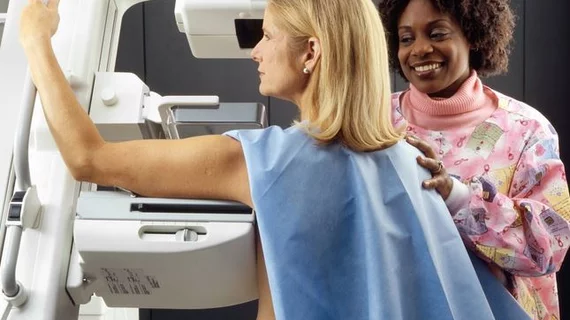A ‘nudge’ in the right direction can improve imaging-based cancer screening
Clinicians and patients can both be “nudged” in certain ways that improve decision-making related to imaging-based cancer screening, according to a new analysis published in the Journal of the American College of Radiology.
These nudges take a variety of forms, the authors explained, from light interventions (providing helpful information) to stronger, more direct interventions (automatically scheduling appointments for patients).
“Nudges can vary in both their applicability and effectiveness,” wrote Mitesh S. Patel, MD, MBA, MS, Perelman School of Medicine at the University of Pennsylvania in Philadelphia, and colleagues. “Depending on the context of the medical decision and characteristics of the imaging test itself, careful consideration—and at times, experimentation—is needed to understand the most suitable type of nudge. The advent of the electronic health record (EHR) supports such work, enabling organizations and leaders to test and deploy nudges at scale in cost-effective ways.”
The EHR can play a pivotal role in providing nudges to the clinicians who interact with patients on a regular basis. Prompts specifically focused on guideline-based recommendations, for instance, force the clinician to address the possibility of screening right away. Designing a nudge that advices primary care providers to discuss mammography with patients and schedule a screening, for example, can lead to more patients being screened. Other ways to effectively nudge clinicians include asking them to sign “pre-commitment contracts” and providing monthly feedback on screening data.
Of course, reaching patients with these nudges is equally important. Helping them understand they should follow through with a recommended screening schedule is a considerable challenge.
“Traditional efforts to improve adherence to recommended imaging have relied mostly on education, a well-intentioned focus that is limited by the fact that it assumes information is the only missing link to better decision making,” the authors wrote. “Other practices that exist in some settings, such as sending out patient reminders about screening tests, involve behavioral elements but could nonetheless be further improved through nudges that formally leverage principles from behavioral science.”
Patel et al. suggested that leaders consider using default nudges, which frame the desired outcome as “the choice that occurs without additional action by the recipient.”
“This approach can be very impactful in aligning decisions with evidence-based pathways in situations in which patients do not have strong preferences and the optimal choice is clear,” they wrote.
Also, an opt-out approach, where the patient has to decline participation in screening, has been proven more influential than an opt-in approach, where the patient is asked if they want to participate in screening.
So what can radiologists do to implement nudges at their own practices? Collaboration with ordering clinicians is key, the authors wrote, as is assuming “a more active role” in patient interactions.
“Organizations and leaders should capitalize on the opportunity to implement nudges to improve decision making related to the ordering and completion of imaging-based cancer screening tests, particularly using existing technology platforms such as the EHR,” the authors concluded. “Doing so can help correct the tendency for clinicians and patients to veer toward “predictably irrational behaviors” and ultimately improve the value of care.”

